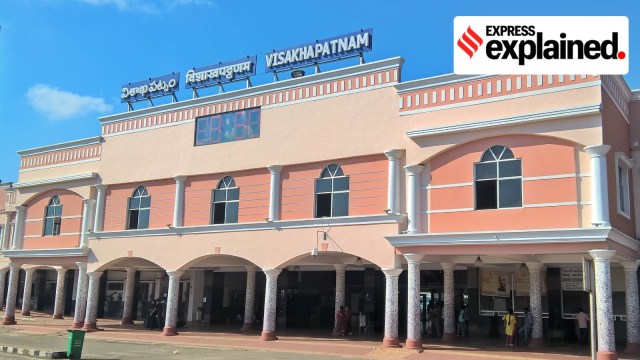On Friday (February 7), the Union Cabinet ex post facto approved the plan to create the new South Coast Railway Zone. Prime Minister Narendra Modi laid the foundation stone of the South Coast Railway headquarters in Visakhapatnam, Andhra Pradesh, in early January.
Created under the Andhra Pradesh Reorganisation Act of 2014, which led to the formation of Telangana state, the SCoR zone will be the 18th zone of the Indian Railways. Its jurisdiction has been carved out from parts of the East Coast Railway and South Central Railway zones.

The Cabinet also divided the Waltair Railway Division (earlier under the East Coast Railway), among the largest revenue-generating areas of the Indian Railways, into two parts. Citing its colonial-era name, the government renamed the first part as the Visakhapatnam Railway Division and included it under the new zone.
The other part will be converted into a new division with headquarters at Rayagada, Odisha, under the East Coast Railway.
Why was the new railway zone announced?
According to item 8 of Schedule 13 (Infrastructure) of the Andhra Pradesh Reorganisation Act, Indian Railways was to examine establishing a new railway zone.
On February 27, 2019, the Central government announced its decision to create a new railway division, envisaged as a strategic hub for operations in Andhra Pradesh. It would help improve operational efficiency and provide focused service to the growing passenger and freight demands. It is now being implemented, with some modifications to the Cabinet decision dated 28.02.2019.
A senior railways official told The Indian Express, “It will support industrial and agricultural growth in the region. Along with this, it will enhance logistics for major ports like Visakhapatnam and Krishnapatnam. The zone will boost tourism to Tirupati and other cultural landmarks in Andhra Pradesh.”
Story continues below this ad
While there was a long-standing demand for a separate railway zone after the bifurcation of Andhra Pradesh, it was fulfilled only after a consonance of power came about between the state and the Centre. Andhra Pradesh’s ruling Telugu Desam Party (TDP), which came to power in 2024, is part of the BJP-led National Democratic Alliance (NDA) at the Centre.
What divisions will the South Coast Railway zone include?
It will cover a significant portion of Andhra Pradesh, along with parts of Telangana and Tamil Nadu. Its key divisions include Vijayawada Division (from South Central Railway), Guntur Division (from South Central Railway) and a part of Waltair Division, that is, Visakhapatnam Division.
Its share of the former Waltair division will roughly comprise the sections between stations Palasa-Visakhapatnam-Duvvada, Kuneru–Vizianagaram, Naupada Jn.–Paralakhemundi, Bobbili Jn.–Salur, Simhachalam North–Duvvada bypass, Vadalapudi–Duvvada and Visakhapatnam Steel Plant–Jaggayapalem (around 410 km).
The other part of the Waltair division, covering sections between stations Kottavalasa–Bacheli, Kuneru–Theruvali Jn., Singapur Rd.–Koraput Jn. and Paralakhemundi–Gunpur (around 680 Km), will be converted into a new division with headquarters at Rayagada.
Story continues below this ad
Why is the Waltair division significant?
The Waltair division is an important source of revenue for the railways, primarily because its freight traffic is linked to the mining and steel industries of Odisha and Chhattisgarh.
According to the Ministry of Railways’ data, East Coast Railway (ECoR) surpassed all records of Indian Railways in Freight Loading in the Financial Year 2023-24. From April 1, 2023, to March 25, 2024, ECoR loaded 250 million tons of freight, surpassing the record set during the 2022-23 fiscal.
Of this, the Khurda Road Division of ECoR contributed 156.17 million tonnes, followed by 74.66 million tonnes by the Waltair Division and 19.20 million tonnes by the Sambalpur Division. ECoR also became the first zone to cross the milestone of 200 million tonnes of freight loading for the fifth consecutive time.
However, the Opposition Biju Janata Dal (BJD) and Congress leaders in Odisha have criticised the move. They have argued that the state will face an adverse economic impact because the revenue-generating part of ECoR, headquartered in Bhubaneswar, is being given to the South Coast Railway.








































